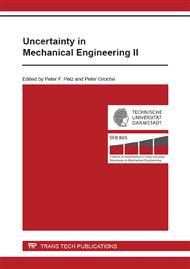[1]
B. Lotter, H.P. Wiendahl, Montage in der industriellen Produktion, Springer-Verlag, Berlin, Heidelberg, 2012, pp.222-227.
Google Scholar
[2]
F. Klocke, T. Kohmäscher, Autonomes Frässystem, in: T. Pfeifer, R. Schmitt (Eds. ), Autonome Produktionszellen - Komplexe Produktionsprozesse flexibel automatisieren, Springer-Verlag, Berlin, Heidelberg, 2006, pp.89-177.
DOI: 10.1007/3-540-30811-3_4
Google Scholar
[3]
S. Hesse, Automatisieren mit Know-how, Hoppenstedt Bonnier Zeitschriften, Darmstadt, 2002, pp.21-316.
Google Scholar
[4]
T. Kanai, Y. Ando, S. Inagaki, Design of a Compliant Press-Fit Pin Connection, IEEE Transactions on Components, Hybrids, and Manufacturing Technology, Vol. 8, 1985, pp.40-45.
DOI: 10.1109/tchmt.1985.1136458
Google Scholar
[5]
R. Goel, E. Guancial, Stress Distributions Around an Interference-Fit Pin Connection in a Plated Through Hole, IEEE Transactions on Components, Hybrids, and Manufacturing Technology, Vol. 3, 1980, pp.392-402.
DOI: 10.1109/tchmt.1980.1135626
Google Scholar
[6]
W. Woody, U.S. Patent 6, 592, 382 B2 (2003).
Google Scholar
[7]
E. Kotowicz, International Patent WO 08095816 A1 (2008).
Google Scholar
[8]
M. Reichenberger, M. Eisenbart, R. Meier, Alternative interconnection technologies for MID, MID, Molded Interconnect Devices, International Congress 4, Bamberg, 2000, pp.285-297.
Google Scholar
[9]
R. Sander, U.S. Patent 7, 946, 861 B2 (2011).
Google Scholar
[10]
A.P. Mouritz, Review of z-pinned composite laminates, Composites Part A: Applied Science and Manufacturing, Vol. 38 (12), 2007, pp.2383-2397.
DOI: 10.1016/j.compositesa.2007.08.016
Google Scholar
[11]
I.K. Partridge, D.D.R. Cartié, Delamination resistant laminates by Z-Fiber® pinning: Part I manufacture and fracture performance, Composites Part A: Applied Science and Manufacturing, Vol. 36 (1), 2005, pp.55-64.
DOI: 10.1016/s1359-835x(04)00180-0
Google Scholar
[12]
R. Sander, International Patent WO 077819 A1 (2009).
Google Scholar
[13]
E. Hering, K. Bressler, J. Gutekunst, Elektronik für Ingenieure und Naturwissenschaftler, fifth ed., Springer-Verlag, Berlin, Heidelberg, 2005, pp.298-319.
DOI: 10.1007/978-3-642-05499-0
Google Scholar
[14]
D. Stokic, S. Scholze, J. Barata, Self-learning embedded services for integration of complex, flexible production systems, IECON 37th Annual Conference of IEEE Industrial Electronics, Melbourne, 2011, pp.415-420.
DOI: 10.1109/iecon.2011.6119346
Google Scholar


